Do you have a question about the Ericsson BUSINESSPHONE 50 and is the answer not in the manual?
Lists the components of the BusinessPhone Communication Platform.
Answer, make, serial, busy, conference, transfer calls.
Managing call diversion and message functions.
Details on Display, Menu Keys, and 2nd Key functions.
Functions for Message, Info, Call Control, and Console Mode keys.
Mute, loudspeaker, handset features, and key panels.
Activating off-duty state and changing answering positions.
Activating the system's night switch mode.
How internal and external calls are indicated.
Procedures for answering calls and enabling silent ringing.
How to make internal calls to other extensions.
Procedures for external calls and saving numbers.
Using last number redial and setting up automatic redial.
Cancelling, pausing redial, and handling busy extensions.
Transfer to busy extension and camp-on features.
Intruding on busy calls and forced release procedures.
Handling busy external lines and intrusion.
Monitoring long distance calls while handling new ones.
Procedures for transferring incoming calls to extensions.
Transferring immediately, announcing, to busy extensions, and call-back.
Operator and individual call holding methods.
Holding calls for monitoring and serial call handling.
Switching between handset, handsfree, and group listening.
Muting the microphone and establishing conference calls.
Finishing and connecting conference participants.
Dial tone and on-line call ordering procedures.
Ordering calls without being on line and reserving lines.
Receiving info on diverted calls and bypassing diversion.
Activating and cancelling internal call diversion.
Programming, cancelling, and re-activating external diversion.
Pre-defined texts, voice, and free text information.
Procedures for entering absence information.
Examples of using pre-defined absence texts.
Example of setting vacation absence text.
Recording voice messages and entering free text.
Modifying existing absence information.
Setting or changing the password for the message system.
Procedures for sending direct messages to extensions.
Sending call-back, voice, or text messages after unanswered calls.
Sending messages to multiple destinations and changing sender.
Checking sent and returned messages.
Accessing and reviewing messages on other extensions.
Reviewing and saving received messages.
Forwarding received voice messages to other mailboxes.
Step-by-step process for forwarding voice messages.
Recording and retrieving personal voice messages.
Diverting calls to a common mailbox for messages.
Accessing messages internally and externally.
Common and individual abbreviated numbers for calls.
Programming numbers onto programmable keys.
Programming and activating the dial-by-name feature.
Searching internal and external telephone directories.
Viewing cost of last call and own accumulated costs.
Checking call costs for other extensions or trunk lines.
Reading counters, resetting, and initiating printouts.
Showing counters on display and reading detailed costs.
An example of a call metering printout.
Details of information provided in a call metering printout.
Performing a check on system counters.
Metering calls supervised by the operator.
Registering call costs via account number.
Loudspeaker paging and managing external lines via key system.
Supervising group members and picking up their calls.
Including phones in hunt groups and logging in.
Answering hunt group calls and logging out.
Picking up calls from a common bell extension.
Placing call costs on accounts and using automated attendant.
Setting and cancelling phone reminders.
Listening to music and using the doorphone function.
Direct intercom calls and making external calls via DISA.
Preventing unauthorized use and re-opening extensions.
Setting a personal password for security features.
Temporarily bypassing blocked extensions for calls.
Using automatic and manual least cost routing.
Displaying caller and called party numbers on ISDN.
Procedures for answering incoming calls on ISDN lines.
Procedures for making external calls on ISDN lines.
Requesting number tracing for malicious incoming calls.
Suppressing number display to connected party.
Adding keys and enhancing conference quality.
Alarm units, option units, extra handset, tape recorder.
Using and activating headsets.
Switching headset audio between modes.
Assigning functions to programmable keys.
Step-by-step procedure to program a function onto a key.
Setting specific ringing characters for programmed functions.
Setting supervision and ringing characteristics for extensions.
Table detailing function codes and their associated data.
Overview of the phone's display structure.
How different call types and statuses are shown.
Abbreviations and meanings for call statuses.
Meanings of different key lamp states.
Adjusting volume and ringing preferences.
Selecting different modes for answering incoming calls.
Selecting modes for extending calls and signalling.
Adjusting volume and ringing signal settings.
Setting ringing volume and character.
Descriptions of audible tones used by the system.
Descriptions of audible ringing signals.
Method for entering text using the keypad.
Considerations for connecting multiple external lines.
Connecting the telephone handset and exchange cables.
Wall mounting the handset hook and adjusting the telephone stand.
Connecting optional expansion key panels.
Advice on telephone placement and cleaning procedures.
Definitions from Abbreviated Number Dialling to DISA.
Definitions from Diversion to Loudspeaker Paging.
Definitions from Mailbox to Recall.
Definitions from Serial Call to Trunk Line.
Details on Telephone Toolbox CD and mailbox voice guide.
Lists the components of the BusinessPhone Communication Platform.
Answer, make, serial, busy, conference, transfer calls.
Managing call diversion and message functions.
Details on Display, Menu Keys, and 2nd Key functions.
Functions for Message, Info, Call Control, and Console Mode keys.
Mute, loudspeaker, handset features, and key panels.
Activating off-duty state and changing answering positions.
Activating the system's night switch mode.
How internal and external calls are indicated.
Procedures for answering calls and enabling silent ringing.
How to make internal calls to other extensions.
Procedures for external calls and saving numbers.
Using last number redial and setting up automatic redial.
Cancelling, pausing redial, and handling busy extensions.
Transfer to busy extension and camp-on features.
Intruding on busy calls and forced release procedures.
Handling busy external lines and intrusion.
Monitoring long distance calls while handling new ones.
Procedures for transferring incoming calls to extensions.
Transferring immediately, announcing, to busy extensions, and call-back.
Operator and individual call holding methods.
Holding calls for monitoring and serial call handling.
Switching between handset, handsfree, and group listening.
Muting the microphone and establishing conference calls.
Finishing and connecting conference participants.
Dial tone and on-line call ordering procedures.
Ordering calls without being on line and reserving lines.
Receiving info on diverted calls and bypassing diversion.
Activating and cancelling internal call diversion.
Programming, cancelling, and re-activating external diversion.
Pre-defined texts, voice, and free text information.
Procedures for entering absence information.
Examples of using pre-defined absence texts.
Example of setting vacation absence text.
Recording voice messages and entering free text.
Modifying existing absence information.
Setting or changing the password for the message system.
Procedures for sending direct messages to extensions.
Sending call-back, voice, or text messages after unanswered calls.
Sending messages to multiple destinations and changing sender.
Checking sent and returned messages.
Accessing and reviewing messages on other extensions.
Reviewing and saving received messages.
Forwarding received voice messages to other mailboxes.
Step-by-step process for forwarding voice messages.
Recording and retrieving personal voice messages.
Diverting calls to a common mailbox for messages.
Accessing messages internally and externally.
Common and individual abbreviated numbers for calls.
Programming numbers onto programmable keys.
Programming and activating the dial-by-name feature.
Searching internal and external telephone directories.
Viewing cost of last call and own accumulated costs.
Checking call costs for other extensions or trunk lines.
Reading counters, resetting, and initiating printouts.
Showing counters on display and reading detailed costs.
An example of a call metering printout.
Details of information provided in a call metering printout.
Performing a check on system counters.
Metering calls supervised by the operator.
Registering call costs via account number.
Loudspeaker paging and managing external lines via key system.
Supervising group members and picking up their calls.
Including phones in hunt groups and logging in.
Answering hunt group calls and logging out.
Picking up calls from a common bell extension.
Placing call costs on accounts and using automated attendant.
Setting and cancelling phone reminders.
Listening to music and using the doorphone function.
Direct intercom calls and making external calls via DISA.
Preventing unauthorized use and re-opening extensions.
Setting a personal password for security features.
Temporarily bypassing blocked extensions for calls.
Using automatic and manual least cost routing.
Displaying caller and called party numbers on ISDN.
Procedures for answering incoming calls on ISDN lines.
Procedures for making external calls on ISDN lines.
Requesting number tracing for malicious incoming calls.
Suppressing number display to connected party.
Adding keys and enhancing conference quality.
Alarm units, option units, extra handset, tape recorder.
Using and activating headsets.
Switching headset audio between modes.
Assigning functions to programmable keys.
Step-by-step procedure to program a function onto a key.
Setting specific ringing characters for programmed functions.
Setting supervision and ringing characteristics for extensions.
Table detailing function codes and their associated data.
Overview of the phone's display structure.
How different call types and statuses are shown.
Abbreviations and meanings for call statuses.
Meanings of different key lamp states.
Adjusting volume and ringing preferences.
Selecting different modes for answering incoming calls.
Selecting modes for extending calls and signalling.
Adjusting volume and ringing signal settings.
Setting ringing volume and character.
Descriptions of audible tones used by the system.
Descriptions of audible ringing signals.
Method for entering text using the keypad.
Considerations for connecting multiple external lines.
Connecting the telephone handset and exchange cables.
Wall mounting the handset hook and adjusting the telephone stand.
Connecting optional expansion key panels.
Advice on telephone placement and cleaning procedures.
Definitions from Abbreviated Number Dialling to DISA.
Definitions from Diversion to Loudspeaker Paging.
Definitions from Mailbox to Recall.
Definitions from Serial Call to Trunk Line.
Details on Telephone Toolbox CD and mailbox voice guide.
| Speed Dial | Yes |
|---|---|
| Caller ID | Yes |
| Speakerphone | Yes |
| Headset Jack | Yes |
| Message Waiting Indicator | Yes |
| Handset | Yes |

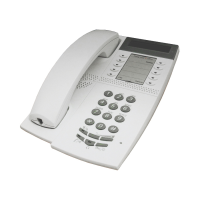

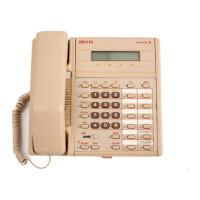

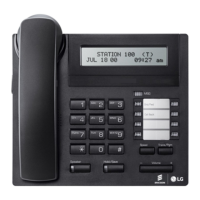



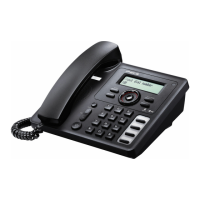
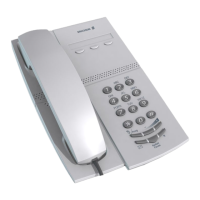
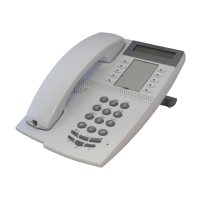
